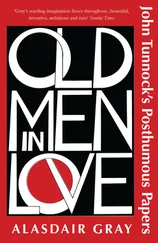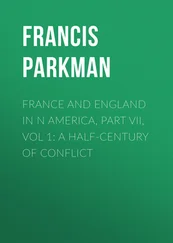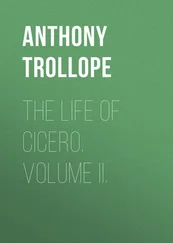Frances Elliot - Old Court Life in Spain; vol. 2
Здесь есть возможность читать онлайн «Frances Elliot - Old Court Life in Spain; vol. 2» — ознакомительный отрывок электронной книги совершенно бесплатно, а после прочтения отрывка купить полную версию. В некоторых случаях можно слушать аудио, скачать через торрент в формате fb2 и присутствует краткое содержание. Жанр: foreign_antique, foreign_prose, на английском языке. Описание произведения, (предисловие) а так же отзывы посетителей доступны на портале библиотеки ЛибКат.
- Название:Old Court Life in Spain; vol. 2
- Автор:
- Жанр:
- Год:неизвестен
- ISBN:нет данных
- Рейтинг книги:3 / 5. Голосов: 1
-
Избранное:Добавить в избранное
- Отзывы:
-
Ваша оценка:
- 60
- 1
- 2
- 3
- 4
- 5
Old Court Life in Spain; vol. 2: краткое содержание, описание и аннотация
Предлагаем к чтению аннотацию, описание, краткое содержание или предисловие (зависит от того, что написал сам автор книги «Old Court Life in Spain; vol. 2»). Если вы не нашли необходимую информацию о книге — напишите в комментариях, мы постараемся отыскать её.
Old Court Life in Spain; vol. 2 — читать онлайн ознакомительный отрывок
Ниже представлен текст книги, разбитый по страницам. Система сохранения места последней прочитанной страницы, позволяет с удобством читать онлайн бесплатно книгу «Old Court Life in Spain; vol. 2», без необходимости каждый раз заново искать на чём Вы остановились. Поставьте закладку, и сможете в любой момент перейти на страницу, на которой закончили чтение.
Интервал:
Закладка:
Then comes the echo of many steps in the antechamber, and Claire rushes in through the arras as Don Fadique disappears by a door on the other side.
Following Claire appears a tall and stately jefe , holding a white wand of office, with many crosses and decorations on his breast, and a high plumed hat in his hand, which he doffs, bowing low.
“Madam, the Queen,” says he, in a sonorous voice, again inclining himself to the ground, “it is my duty to apprise your Majesty that the king is now passing the drawbridge outside the city. A royal page bears his greeting to your Grace.”
“Claire, oh, Claire!” sighs Blanche, casting herself into her arms. “Oh! why did you leave me? ”
CHAPTER V
Marriage at Valladolid
THE ancient city of Valladolid lies on low ground and is watered by the Pisuerga, a broad river for this waterless land.
Although so far in the north, Valladolid was at this time considered the official capital of Castile, and therefore it was there that Blanche had come to meet her much dreaded bridegroom.
A more uninviting city does not exist in Spain, as we see it now, and although it suffered cruelly from the invasion of the French in the Peninsular War, uninteresting it must always have been. No charm leads one’s thoughts lovingly to Valladolid. The cathedral is hideous. Only the front of San Pablo and the Collegiata de San Gregorio, a magnificent gift of Cardinal Ximenes, dwell in the mind.
Of course, with the exception of San Pablo, these buildings were erected centuries after Don Pedro’s reign, and one asks oneself what Valladolid could have been then?
There are no environs. The river flows through flat banks with no timber except long lines of thin poplars, the poorest of all trees, and beyond, the eye wanders over endless plains towards Burgos and Salamanca to the borders of Portugal.
But now, forgetting the present aspect of the city, we must go back to the 3d of June, 1375, the day on which Don Pedro was to arrive to meet the new queen, espoused in his name by his brother, the Grand Master of Santiago, to be kept as a great festival, for which thousands had assembled from all parts of the kingdom. For indeed, in those days of perpetual warfare, a fiesta was well esteemed, as they were very rare, especially in the north, inhabited by a more serious and impassioned race of hardy men than the lighthearted southerners of Andalusia.
Now this occasion had been seized as a gift from heaven, especially as it was to take the form of a tournament, in which the Infante Don Fadique was to take part, as well as the Infante of Aragon, and Don Juan de Mañara, known in all ages as “Don Juan,” the favourite of the king, gambler, reveller, and seducer, and that graceful but treacherous knight, Don Garcia de Padilla, brother of Maria, both being in attendance on the king. The queen-mother, Doña Maria of Portugal, had also journeyed from Seville to welcome the young queen, and Albuquerque followed her, full of alarm for the result of the alliance he had brought about.
Much had been heard of the strange qualities of the young king, about whom men’s minds were divided. Such mysterious crimes were attributed to him, such unheard-of brutalities, that it was generally supposed he acted under the influence of magic spells, wrought on him by his mistress, Maria de Padilla, held by the populace as a witch accursed by God and man.
Those who had not seen him, and they were many, and the women especially, who had heard harrowing tales of his misdeeds, crowded into Valladolid, where, accommodation not being easily obtained except for the rich, the season being summer, had built themselves huts of branches along the river, and camped out there, as near as possible to the green vega where the tournament was to be held.
And a wonderful sight it is, and almost beautiful to behold, under a heaven one sheet of unbroken blue, golden lights resting on the gaudy colours within the enclosed space, carpeted with grass; lofty gateways, making the four entrances, adorned with coloured tiles in blue and gold; tents of variegated rich stuffs, luxuriously fitted up for the convenience of each knight about to take part in the tilt; galleries hung with brocade and cloth of gold; turreted towers in silk striped black and yellow, from which hang banners; fountains furnished with bowls of silver to refresh the knights, over which court pages keep guard; stands for the musicians, covered balconies for the ladies, where the sparkle of dark eyes and rounded arms peep out of delicate draperies; and in the centre, the gaudiest of all, the royal pavilion, “as high as three lances,” blazing with cloth of gold, trimmed with feathers and flowers, the flag of Castile and Leon floating overhead, beside the emblazoned Nodo of Castile, and the French lilies impanelled on the same shield – the interior protected from the sun by tinted awnings, under which rise three crimson thrones, for the king, queen, and queen-mother, “Matrique” to the bride, and all around the soft whispering of leaves, the cooing of doves and pigeons, brought, Moorish fashion, in cages, and the splash of abundant waters.
The time fixed for the tournament was at the setting of the sun, but from the earliest dawn the populace had crowded into every available space, and been entertained with seguidillas and zambras danced by bronzed gitanas to the clink of castanets, and there were races of tame elephants with silken howdahs, jumpers and tossers of ball, and Moorish jugglers whose tricks were wonderful and set all the peasants agape with joy.
It was known that the king’s brother, the Grand Master, would break a lance, and it was thought that the young king himself would run at the ring in honour of his bride. But this was said only by those who did not know, for in the first place Don Pedro, a young warrior full of conceit and constantly risking his life in battles, disdained all these courtly pageants; and in the second place, he had arrived at Valladolid in so bad a temper that his attendants feared to approach him.
Never was a royal bridegroom so ill-disposed for mirth as Don Pedro when, habited in a royal mantle draped over a crimson surcoat trimmed with fur, and wearing a helmet encircled by a crown, panached with snowy feathers, he took his seat on his throne in the centre of the pavilion, Albuquerque, his padrino or god-father, behind him, to the cry of “Castilla! Santiago! Santiago! Viva el Rey Justiciar! ”
Beside him, on a less elevated seat, sat his mother, Queen Maria.
As the bride-queen, white as her name, and trembling in every limb, advances to place herself on a chair of state on his right hand, the king – who now sees her for the first time, having purposely delayed his entrance into Valladolid until the last possible moment – rises to salute her; when, at the aspect of terror depicted on her face, in evident wrath he suddenly turns to address Albuquerque, pointing contemptuously to the poor princess who sinks back into the arms of Claire.
“ Sangre de Dio! Signor Conte,” mutters the king, loud enough to be heard, “a pretty consort you have chosen. I am not wont to be considered an ogre in ladies’ eyes, but doubtless the Lady Blanche, spite of her baby-face, has met some damoisel at her father’s court whose remembrance turns me to a monster in her eyes. By my Patron Saint (if I have one), before the day is over I will assure myself who is the cuckoo who has soiled my nest.”
“My lord, these are most unworthy suspicions,” returns Albuquerque, with that calm dignity of manner before which the king’s petulant humour so often yields. But not so now. Surrounded by those who have fostered his evil passions, he knows that his every look and movement will be duly reported by her brother, Don Garcia, to Maria de Padilla.
Читать дальшеИнтервал:
Закладка:
Похожие книги на «Old Court Life in Spain; vol. 2»
Представляем Вашему вниманию похожие книги на «Old Court Life in Spain; vol. 2» списком для выбора. Мы отобрали схожую по названию и смыслу литературу в надежде предоставить читателям больше вариантов отыскать новые, интересные, ещё непрочитанные произведения.
Обсуждение, отзывы о книге «Old Court Life in Spain; vol. 2» и просто собственные мнения читателей. Оставьте ваши комментарии, напишите, что Вы думаете о произведении, его смысле или главных героях. Укажите что конкретно понравилось, а что нет, и почему Вы так считаете.












